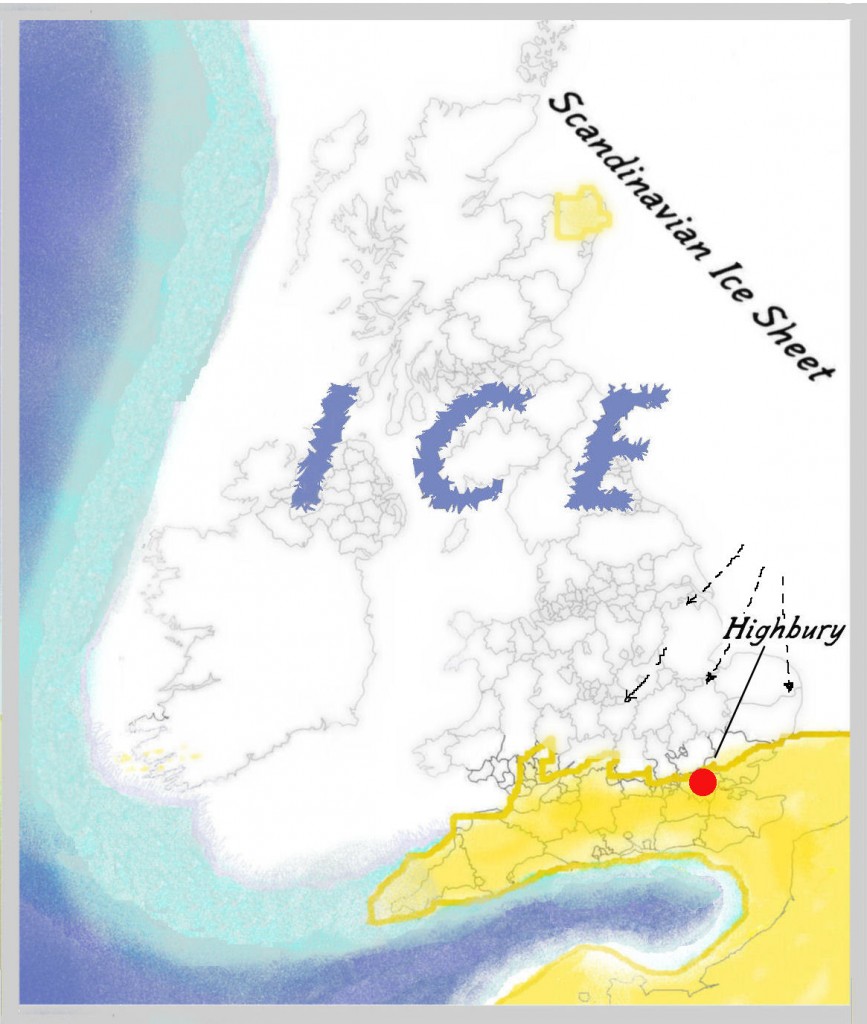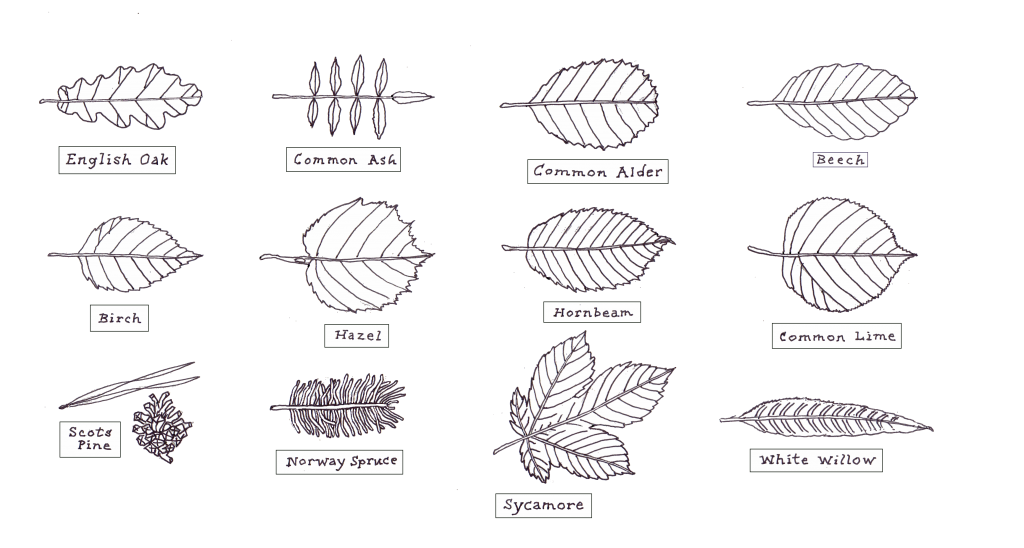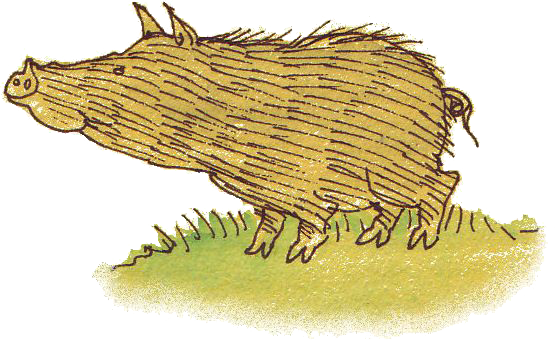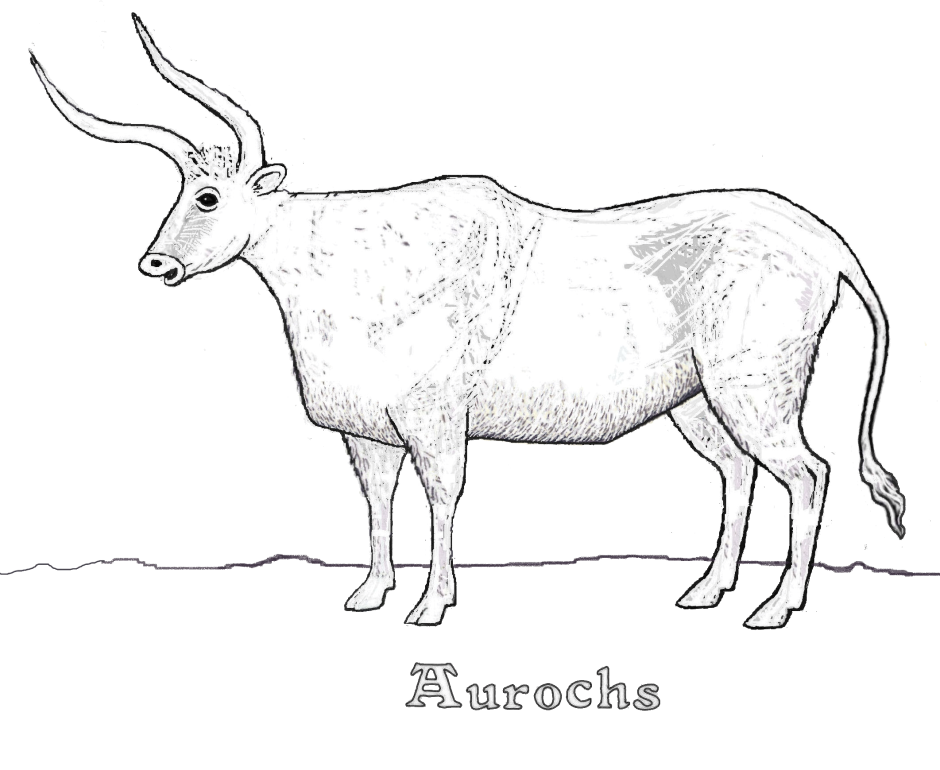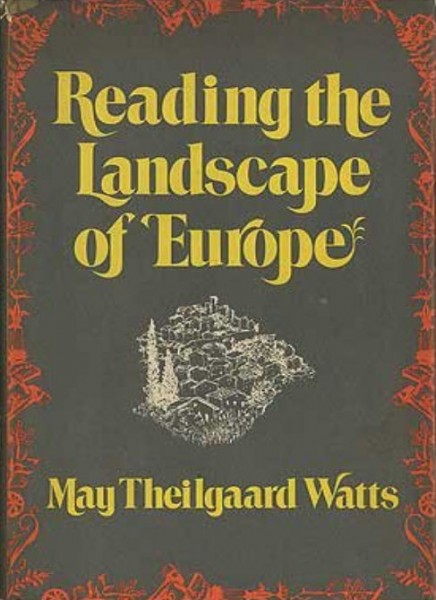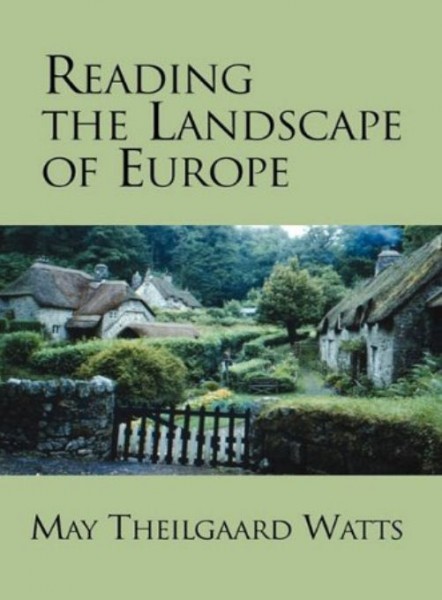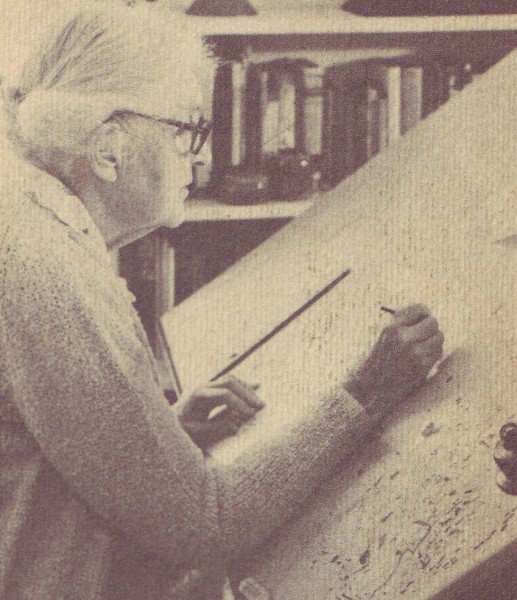This era, the Pleistocene, finds the Scandinavian Ice Sheet spreading eastward over Britain. It does not reach Highbury or the south of England, but our landscape is open and bare. The ice builds into glaciers over 3,000 feet thick in places, a heavy weight forcing great changes on the land. Trees cannot grow in the frozen ground.
There are long spells of freezing and thawing. Meltwater flows over the south of England from Scandinavia and East Anglia, bringing with it boulders, pebbles, sand and rock flour. Lines on the map show the direction of the melting. Drainage channels are carved into the land, later to be called the River Thames and the River Severn.
As the climate warms, plants grow in the milder conditions. Many tree species native to Britain appear now, forming forests: Oak, Ash, Hazel, Birch, Willow, Beech, Alder, Lime, Yew, Hornbeam, Elm; also Hemlock and Wingnut (Pterocarya). Other plantlife includes arctic willows, dwarf birches, grasses and sedges.
The ice returns five times, melting away as the climate warms. Wildlife evolving in these times, adapting to the conditions, includes animals with tusks and horns:
The Aurochs, Bos primogenius, was a species of ancient ox that evolved in the Middle Pleistocene era. Herds of these massive animals roamed from India, where they are believed to have originated, across Asia and North Africa, reaching Europe some 270,000 years ago. Early humans painted the Aurochs on the walls of limestone caves, such as that of Lascaux in France, along with Mammoth, Reindeer, Bison and other ice age animals.
The Aurochs were used by the Romans as ‘battle beasts’ in their arenas; they were widely hunted in Europe until, as their numbers dwindled, only royal households and the nobility were allowed to hunt them.
The species became extinct in the Netherlands around AD600; it was still found in North Wales in late Roman times, but the very last of the Aurochs line, a female, died in a forest in Poland in 1627.
ENDANGERED HEDGEHOGS
The Hedgehog is is an Ice Age animal whose numbers have plummeted by 95%. Read Martin Fletcher’s extensive article about their plight in The Telegraph :
* READING THE LANDSCAPE OF EUROPE by May Theilgaard Watts * Published by Harper & Row, 1971
May Theilgaard Watts, a Danish-American ecologist, illustrator, writer and storyteller, was staff naturalist at the Morton Arboretum in Wisconsin. This book is filled with her drawings, maps, diagrams and anecdotes from family visits to Britain and seven European countries. ‘Reading the landscape’ involves looking at a country’s plants and animals, its folktales, geology, history and the changes its humans have made to the land. She writes of the Ice Age as though she had been there. Both hard cover and paperback versions of this book are still in print. Other books:
* Reading the Landscape of America * Macmillan 1975
